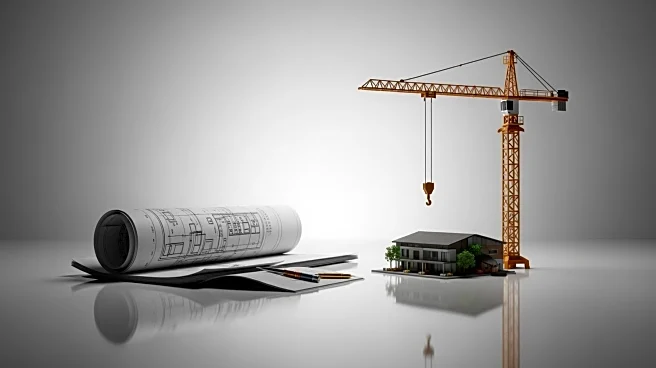What's Happening?
The U.S. hotel construction sector has experienced a decline for the ninth consecutive month, as reported by CoStar's September 2025 data. The number of hotel rooms under construction has decreased by 12.3%
compared to the previous year, with 137,956 rooms currently being built. This marks the lowest point in construction activity over the past 40 quarters, falling more than 80,000 rooms below the peak observed in the third quarter of 2020. The downturn is attributed to ongoing uncertainty in the market, which has led developers and financial institutions to delay projects. Additionally, rising building and material costs are further hindering new developments. Despite the decline, the current construction activity remains higher than the levels seen after the Great Recession.
Why It's Important?
The continued decline in hotel construction has significant implications for the U.S. hospitality industry. Reduced construction activity can lead to a shortage of new hotel rooms, potentially affecting the industry's ability to meet future demand. This could result in higher room rates and reduced availability for travelers, impacting tourism and related sectors. The slowdown also reflects broader economic uncertainties, as developers and investors remain cautious amid fluctuating market conditions. The rising costs of materials and construction further exacerbate the situation, potentially delaying recovery and growth in the hospitality sector. Stakeholders, including hotel chains and investors, may need to reassess their strategies to adapt to these challenges.
What's Next?
The outlook for the U.S. hotel construction sector remains uncertain, with no immediate signs of recovery. Developers and financial institutions are likely to continue exercising caution until market conditions stabilize. The industry may need to explore alternative strategies, such as renovating existing properties or focusing on smaller-scale projects, to navigate the current environment. Additionally, stakeholders will be closely monitoring economic indicators and policy changes that could influence construction activity. The potential for a turnaround in the construction cycle will depend on factors such as material cost trends, interest rates, and overall economic confidence.
Beyond the Headlines
The decline in hotel construction also raises questions about the long-term sustainability of the hospitality industry. As developers face increasing costs and uncertainties, there may be a shift towards more sustainable and cost-effective building practices. This could include the adoption of green technologies and materials, as well as innovative design approaches to reduce expenses and environmental impact. Furthermore, the slowdown may prompt a reevaluation of market dynamics, with a focus on diversifying offerings and enhancing customer experiences to maintain competitiveness.












